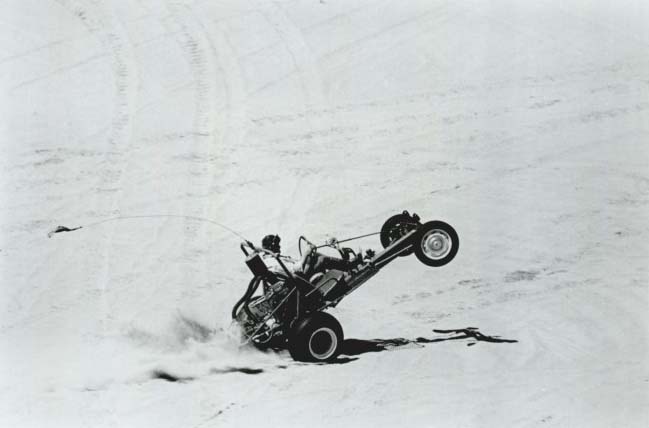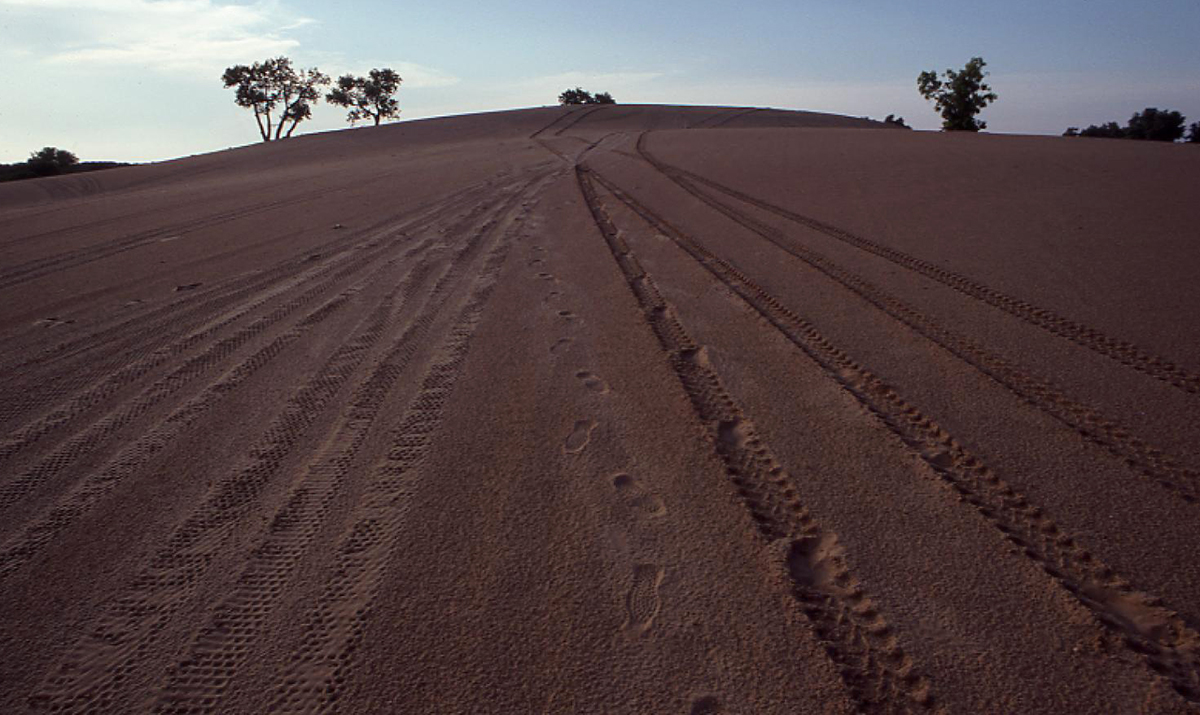The Encyclopedia of Oklahoma History and Culture
LITTLE SAHARA STATE PARK.
A fourteen hundred-acre, state-owned park that is open to the public at all times, Little Sahara State Park consists primarily of sand dunes and tourist amenities. In 1958, when the Waynoka Chamber of Commerce purchased two camels from a circus and placed them in the sand dunes south of their town, they created local tourism, and a movement arose to create a state recreational area. In 1959 the Oklahoma Legislature appropriated $12,500 to buy land from the Oklahoma State Land Commission and develop the park. The park offers campsites (tent or RV), picnic tables, drinking water, and toilets. A major activity is riding dune buggies (rental or privately owned) across much of the parklands.
Sand dunes, which are mounds or ridges of windblown sand, are common on the north side of most major rivers in northwestern Oklahoma. Dunes form mainly through reworking of Pleistocene-age terrace deposits by the wind. Little Sahara is a popular place to see well-developed, "active" dunes, that is, migrating dunes that are devoid of vegetation. The park's layer of sand commonly is twenty-five to seventy-five feet thick.
Sand in the Little Sahara dunes is largely reworked from terrace deposits left by the Cimarron River when it flowed across this area earlier, during Pleistocene times. In addition, some of the sand is blown from flood-plain deposits of the present river. Prevailing winds are from the south and southwest. Therefore, the wind blows, rolls, or pushes grains of sand up the gentle windward (south) slope, and the sand grains then are deposited on the steep lee (north) slope. In this way, sand dunes can migrate across the landscape and can encroach on fertile fields, roads, or even homes. Northeastward migration of these dunes has caused relocation of U.S. Highway 281 three times in the last seventy years, with each new road being built twenty-five to fifty yards east of the previous location.
Bibliography
Kenneth S. Johnson, "Woods County Site 5: Little Sahara Sand Dunes," Guidebook for Geologic Field Trips in Oklahoma: Book II, Northwest Oklahoma, Educational Publication 3 (Norman: Oklahoma Geological Survey, 1972).
Woods (Waynoka, Oklahoma) County Enterprise, 9 July 1959.
Citation
The following (as per The Chicago Manual of Style, 17th edition) is the preferred citation for articles:
Kenneth S. Johnson, “Little Sahara State Park,” The Encyclopedia of Oklahoma History and Culture, https://www.okhistory.org/publications/enc/entry?entry=LI017.
Published January 15, 2010
© Oklahoma Historical Society



